Among the treasures that nature offers, protective herbs stand out as time-tested guardians of well-being. These plants, with their unique properties and historical significance, have been used across cultures to protect against physical, spiritual, and emotional threats. In this article, we delve into the fascinating world of protective herbs, exploring their history, properties, and modern applications.
Historical Roots
The historical roots of protective herbs and their use in various cultures are deeply intertwined with the history of human civilization. The belief in the protective and healing properties of herbs dates back thousands of years and spans across diverse cultures and regions. Here’s a more in-depth look at the historical roots of witch herbs:
Ancient Civilizations:
- Egypt: In ancient Egypt, herbs like myrrh and frankincense were highly valued for their use in embalming and religious rituals. These herbs were believed to protect against decay and evil spirits, ensuring safe passage to the afterlife.
- Greece: The ancient Greeks were pioneers in the use of herbs for medicinal purposes. Herbs like sage and thyme were used for their healing properties, and rosemary was considered a symbol of remembrance and protection.
- China: Traditional Chinese medicine has a rich history of using magic herbs for both healing and protection. Ginseng, for example, is revered for its ability to boost vitality and protect against illness.
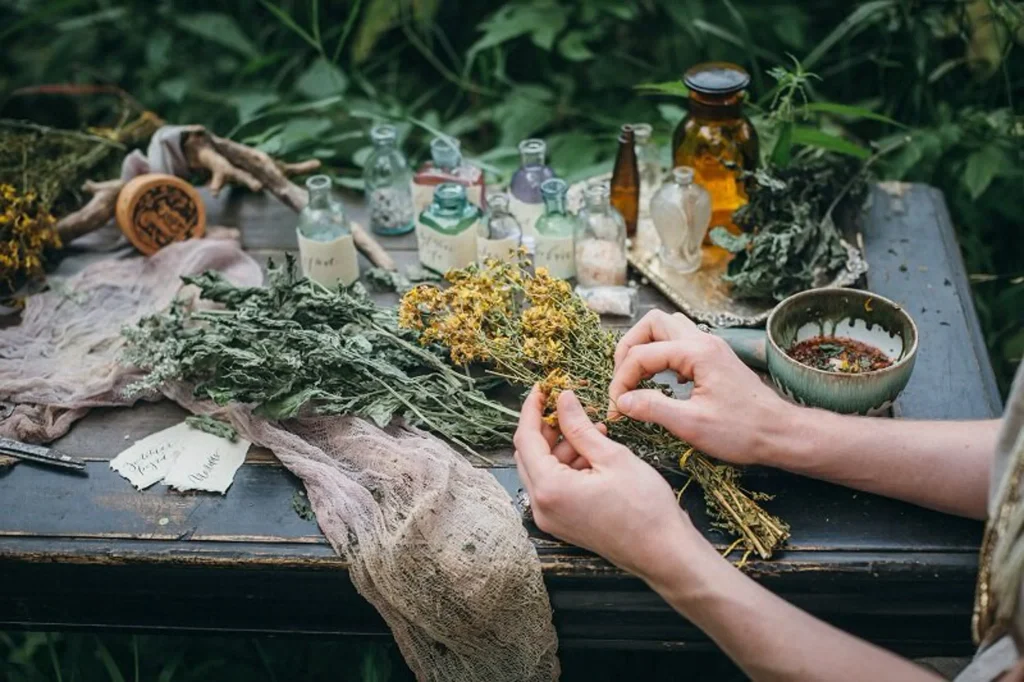

Indigenous Cultures:
- Native Americans: Indigenous peoples of North America have a deep connection to the land and its resources. Sage, cedar, and sweetgrass were commonly used in smudging ceremonies to purify and protect against negative energies and malevolent spirits.
- Amazon Rainforest Tribes: Indigenous tribes in the Amazon rainforest have a vast knowledge of medicinal plants, many of which have protective properties. Herbs like ayahuasca are used in spiritual ceremonies for protection and healing.
European Folklore:
- Medieval Europe: During the Middle Ages, Europe saw the merging of various herbal traditions. Protective herbs and amulets were used to guard against illnesses, curses, and the evil eye. Garlic, for instance, was believed to ward off vampires and protect against disease.
African Traditions:
- African herbalism: African cultures have a rich tradition of using herbs for both medicinal and protective purposes. Herbs like rue have been used to ward off evil spirits, and herbal baths are taken for spiritual purification and protection.
Native Australian Culture:
- Aboriginal Australians: The indigenous peoples of Australia have a deep spiritual connection to the land and its plants. Eucalyptus leaves, among other herbs, are used in smoking ceremonies for protection and purification.
Modern Revival:
- In recent years, there has been a revival of interest in protective herbs and traditional herbalism. People are exploring the healing and protective properties of herbs in the context of natural and alternative medicine.
The historical roots of protective herbs are a testament to the profound relationship between humans and the natural world. Across cultures and epochs, people have turned to these plants not only for physical health but also for spiritual well-being and protection. Today, as we embrace holistic and alternative approaches to health and well-being, the legacy of these ancient traditions continues to influence our understanding and use of protective herbs.
Common Protective Herbs and Their Properties
1. Sage (Salvia officinalis)
Properties:
Sage, scientifically known as Salvia officinalis, is among a group of revered protective herbs, each known for their unique properties, especially in the realm of protection and purification:
- Purification: Sage is widely used for cleansing and purifying spaces, objects, and individuals. Its smoke, when burned, clears negative energies, spirits, and influences. Similarly, other protective herbs like rosemary and basil share similar purifying properties, making them essential in purification rituals.
- Protection: Sage, along with herbs like black salt and garlic, is considered a powerful protective herb. Their energies create barriers shielding against negative entities and energies. These protective herbs are often integrated into amulets, sachets, or placed around the home for enhanced protection.
- Clarity and Wisdom: Sage, like mugwort, is associated with mental clarity and wisdom. It enhances spiritual insight and promotes a clear mind, valuable in meditation and divination practices. Mugwort, another herb used for protection, is believed to offer psychic protection and enhance intuition.
- Healing: Sage and other protective herbs such as juniper are known for their medicinal properties. Juniper, for instance, has been historically used for its healing attributes. In various cultures, these protective herbs are used in teas, poultices, or baths to promote physical and spiritual healing.
Cultural Significance:
1. Native American Traditions:
- Sage, along with cedar and sweetgrass, is significant in Native American smudging ceremonies. The ritual involves burning these protective herbs to cleanse negative energies. Similar rituals are seen in other indigenous cultures using their protective herbs for cleansing and protection.
2. European Folklore:
- Sage, rosemary, and basil have deep roots in European folklore for their protective properties. Sage, for instance, is used to ward off evil spirits, while rosemary is placed under pillows for protection during sleep. Basil, similarly, is believed to protect against negative influences.
3. Modern Pagan and Wiccan Practices:
- Sage, alongside herbs like frankincense and myrrh, is widely used in modern pagan, Wiccan, and witchcraft practices. These protective herbs are often incorporated into rituals, spells, and protective circles to enhance their power and effectiveness.
4. Other Cultural Uses:
- Protective herbs, such as thyme and angelica, have diverse uses across cultures. Thyme is believed to cleanse and purify, making it a common ingredient in protective herbal mixtures. Angelica, with its association with protection and banishing negative energies, finds a place in various cultural practices.
These protective herbs, deeply rooted in cultural traditions, serve as powerful tools in spiritual practices. When used respectfully and with intention, they provide practitioners with a connection to ancient wisdom, enhancing their protection, purification, and healing rituals.
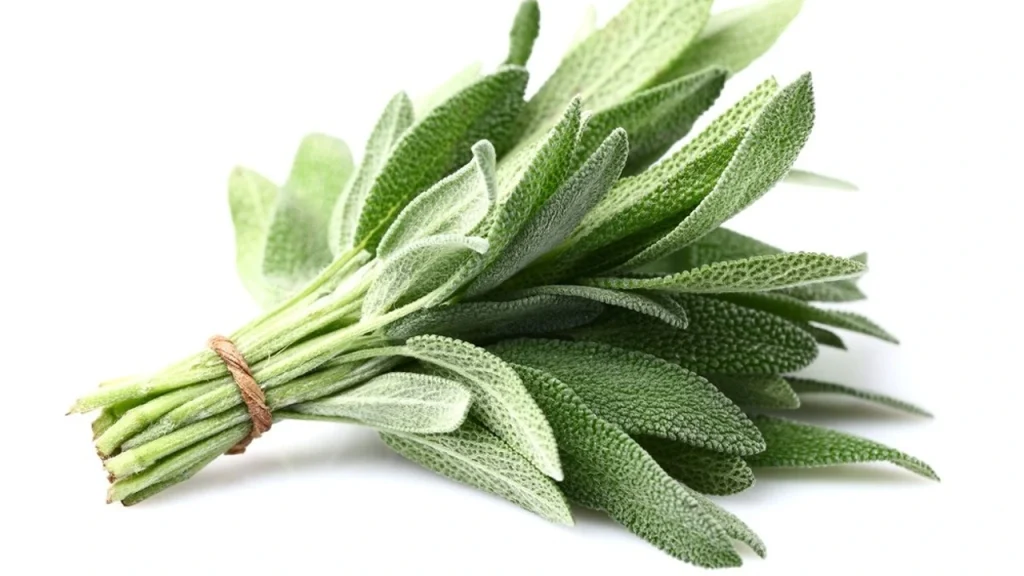

2. Rosemary (Rosmarinus officinalis)
Properties:
Rosemary, scientifically known as Rosmarinus officinalis, stands among a group of revered protective herbs, each with its unique properties in the realms of protection, purification, and healing:
- Protection and Purification: Rosemary is a potent protective herb believed to ward off negative energies and entities. Its aromatic smoke, similar to other protective herbs like sage and cedar, is used for purification and cleansing rituals. It creates a shield of positive energy, making it a valuable tool in spiritual practices.
- Mental Clarity and Memory Enhancement: Rosemary, like herbs such as basil and thyme, is associated with mental clarity, focus, and memory enhancement. These protective herbs are often used in rituals and spells to enhance cognitive abilities, promote clear thinking, and improve decision-making processes. Their scents are believed to stimulate the mind.
- Healing and Health: Rosemary has a long history of medicinal use. It is known for its antibacterial and anti-inflammatory characteristics, similar to other protective herbs like garlic and ginger. Rosemary tea, along with other protective herbs, is used in holistic medicine for its potential to boost the immune system, aid digestion, and promote overall well-being.
- Love and Remembrance: In addition to its protective properties, rosemary, like lavender and jasmine, carries symbolic significance related to love and remembrance. In various cultures, these protective herbs are used in weddings and funerals, signifying love, loyalty, and the memories of departed loved ones.
Cultural Significance:
1. Ancient Greek and Roman Traditions:
- In ancient Greek and Roman cultures, rosemary, alongside herbs like sage and cedar, was considered sacred. It was associated with love, loyalty, and protection. These protective herbs were often used in ceremonies and rituals dedicated to gods and goddesses.
2. Medieval Europe:
- Rosemary gained prominence in medieval Europe, where it was believed to protect against evil spirits and witches. It was often placed under pillows, similar to other protective herbs like mugwort, to prevent nightmares. Branches of rosemary and other protective herbs were used to sprinkle holy water in religious ceremonies.
3. Mediterranean Folklore:
- In Mediterranean folklore, rosemary, along with herbs like basil and juniper, was associated with various superstitions and protective practices. It was often planted near entrances to homes as a protective charm. People believed these protective herbs would guard against negative energies and bring blessings to the household.
4. Modern Herbalism and Aromatherapy:
- In modern herbalism, rosemary is widely used for its medicinal properties, akin to other protective herbs like sage and thyme. Its essential oil, like oils from other protective herbs, is used in aromatherapy for its stimulating and invigorating effects on the mind. These protective herbs find applications in natural beauty products and massage oils for their soothing properties.
Rosemary, alongside its counterparts in the realm of protective herbs, continues to be a beloved and essential tool in various spiritual practices, herbal remedies, and culinary delights. Their enduring significance in different cultures underscores the timeless appeal of these protective herbs, making them symbols of protection, clarity, and love.


3. Basil (Ocimum basilicum)
Properties:
Basil, scientifically known as Ocimum basilicum, is a cherished herb, standing alongside other protective herbs, each possessing unique properties crucial in the realms of protection, purification, and healing:
- Protection and Banishment of Negativity: Basil, akin to sage and rosemary, is renowned for shielding against negative energies and evil spirits. Like its protective herb companions, it features prominently in purification rituals, cleansing spaces and individuals from malevolent influences, creating a protective shield of positive energy.
- Attracting Positive Vibes and Prosperity: Basil, in harmony with thyme and mint, is associated with attracting positive energy and prosperity. It’s believed to invite abundance and harmonious vibrations, making it a vital component in various protective herbal blends.
- Enhancing Mental Clarity and Focus: Basil, in the company of rosemary and sage, is linked to mental clarity and focus. Its usage in rituals and spells sharpens the mind, fosters clear thinking, and enhances concentration—a quality shared by its protective herb counterparts.
- Healing and Spiritual Well-being: Basil, like lavender and chamomile, is valued for its healing properties. Among other protective herbs, it’s used in teas and brews to soothe the spirit and promote overall well-being, highlighting its role in holistic health practices.
Cultural Significance:
1. Ancient Traditions in India and Greece:
- In Indian culture, basil finds sanctity, dedicated to gods like Vishnu and Krishna. Its protective herb companions, such as thyme and sage, also have sacred roles. In ancient Greece, basil was placed on graves, a tradition shared with rosemary and thyme, symbolizing protection and mourning.
2. European Folklore:
- Basil, much like rosemary and garlic, was planted near homes in European folklore, offering protection against evil spirits. These protective herbs warded off negativity, enhancing the energy within homes and communities.
3. Mediterranean and Middle Eastern Traditions:
- In Mediterranean homes, basil, alongside mint and thyme, is cultivated for its protective aura. Middle Eastern traditions incorporate basil into charms and rituals, embracing its power alongside other protective herbs in safeguarding households.
4. Modern Spiritual Practices:
- Basil continues its legacy in modern practices, joining forces with other protective herbs. It’s utilized in spells, sachets, and charms, ensuring its protective energy influences the practitioner’s safety and well-being.
Basil, entwined with its protective herb companions, remains a revered herb, transcending cultures and centuries. Its enduring cultural significance and versatile properties render it not just a culinary delight but also a symbol of protection, positivity, and spiritual clarity across diverse traditions.
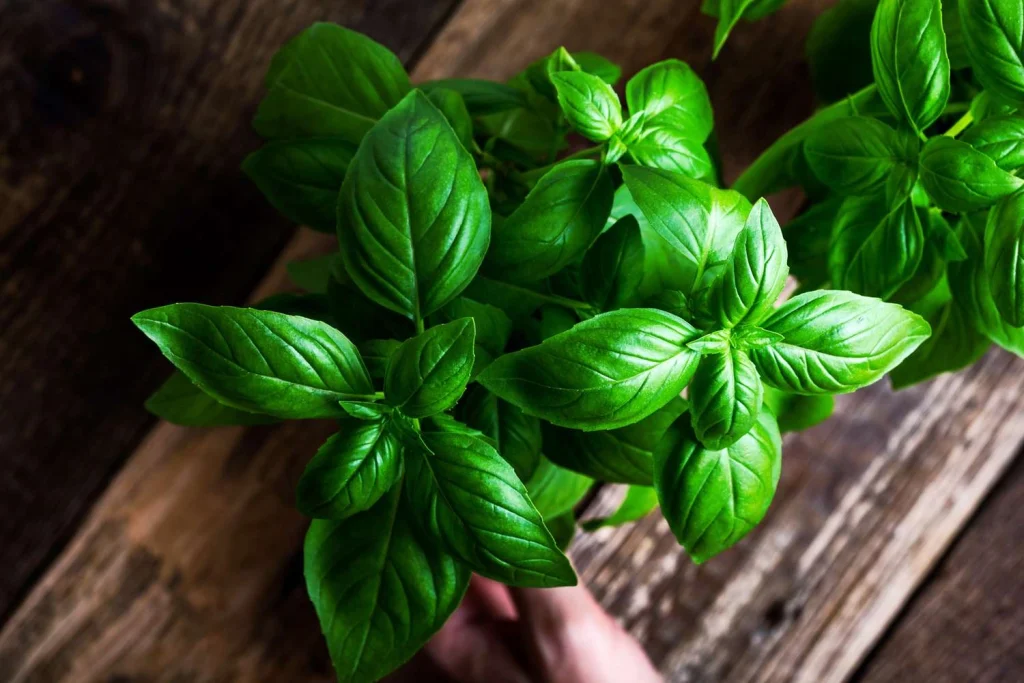

4. Black Salt
Black Salt and Its Protective Herb Allies: Origins and Modern Uses
Properties:
Black salt, a potent protective substance, stands alongside a pantheon of protective herbs, each possessing unique properties crucial in the realms of warding off negativity and ensuring spiritual defense. It combines common salt with various magical elements, becoming a robust shield against harmful influences. Similar to its protective herb companions, black salt possesses the following properties:
- Protection and Banishment of Negative Energy: Black salt, akin to sage, basil, and rosemary, excels at absorbing and banishing negative energies. It creates a potent shield when sprinkled around spaces or incorporated into rituals, forming a protective barrier against harmful influences.
- Warding Against Evil Entities: Like garlic and juniper, black salt is believed to ward off evil entities and spirits. Its presence in homes and sacred spaces acts as a deterrent, safeguarding against malevolent forces and psychic attacks, making it a vital protective tool.
- Cleansing and Purification: Similar to cedar and sage, black salt is utilized in cleansing and purifying rituals. Its application in protective circles or around doorways purges spaces of negativity, ensuring a clean and safe environment, harmonizing with the properties of other protective herbs.
- Hex Breaking and Reversal: Black salt, in league with rue and hyssop, is instrumental in hex-breaking rituals. Its energy is harnessed to break curses, hexes, and negative spells, offering a shield against harm and misfortune, a quality shared by its protective herb allies.
Origins and Modern Uses:
- Historical Roots:
- Black salt’s origins are deeply embedded in magical traditions like Hoodoo and Hinduism. In Hoodoo practices, it’s combined with protective herbs for enhanced potency. In Hindu rituals, it’s used for repelling evil forces and purifying spaces, resonating with the energy of other protective herbs.
- Wiccan and Pagan Practices:
- Within modern Wiccan and Pagan practices, black salt is often combined with protective herbs like rosemary and basil. It is integrated into protective circles, ritual tools, and spells, amplifying their power and creating a fortified defense against negativity and harm.
- Warding in Spiritual and Occult Circles:
- Spiritual practitioners and occultists frequently use black salt alongside protective herbs to create powerful barriers. Combined, they are sprinkled across thresholds and windowsills, symbolizing a line of defense against negative energies and unwanted influences, mirroring the properties of other protective herbs.
- Integration into Magical Crafts:
- Black salt, when blended with protective herbs like sage and juniper, becomes a crucial ingredient in spell jars, sachets, and protective amulets. The combination harnesses the energy of multiple protective herbs, creating a potent blend for spiritual protection and defense.
Black salt, intertwined with the energy of protective herbs, continues to be a stalwart ally in the practices of modern witches, spiritual workers, and magical practitioners. Its enduring reputation as a shield against negativity and malevolent forces is reinforced by the synergy it shares with an array of protective herbs, solidifying its position as a vital tool in the realm of magical protection.


5. Garlic (Allium sativum)
Properties:
Garlic, scientifically known as Allium sativum, stands as a stalwart guardian alongside an array of protective herbs, each contributing unique properties vital in the realms of protection, purification, and warding off negative influences. Much like its protective herb companions, garlic possesses the following essential qualities:
- Warding Off Evil Spirits and Negative Energy: Garlic, akin to sage, black salt, and rosemary, is renowned for its ability to ward off evil spirits and banish negative energy. Its pungent aroma creates a potent protective shield, making it a cornerstone in protective rituals across cultures. When combined with other protective herbs, its energy multiplies, forming a powerful barrier against malevolent forces.
- Protection Against Malevolent Forces: Garlic, like juniper and basil, is believed to protect against malevolent forces, psychic attacks, and unwanted influences. Its presence, alongside protective herbs like rue and thyme, acts as a deterrent, creating a potent barrier against negative entities and energies. Combining the energies of these protective herbs fortifies the shield against psychic intrusions.
- Purification and Cleansing: Similar to cedar and sage, garlic is used for purification and cleansing rituals. Its robust energy clears spaces, dispelling negativity and creating a harmonious environment. When combined with other protective herbs such as lavender and mugwort, its cleansing properties become more profound, ensuring thorough purification and protection.
- Health and Vitality: Garlic is not only a protective herb but also renowned for its health benefits. It strengthens the immune system and promotes vitality. Its role in ensuring physical well-being aligns with its protective properties, making it a symbol of holistic protection. When combined with protective herbs like ginger and turmeric, it becomes a potent elixir of protection and health.
Cultural Significance:
1. Ancient Folklore and Superstitions:
- In ancient folklore, garlic was hung on doors and windows alongside herbs like basil and rosemary to repel evil spirits. These protective herbs formed a powerful shield against negative energies, ensuring the safety of the household.
2. European Witchcraft and Folk Magic:
- Garlic, much like juniper and vervain, found its place in European witchcraft and folk magic. nature Witches used garlic braids alongside herbs like sage and thyme for protection, wearing them as amulets to guard against hexes and curses. The collective energy of these protective herbs amplified their potency, creating a formidable defense.
3. Cross-Cultural Symbolism:
- Garlic’s protective properties are reflected in cross-cultural symbolism. In Eastern European traditions, garlic was placed in babies’ cribs alongside protective herbs like sage and mint for holistic protection. These combined energies ensured the child’s safety, emphasizing the interconnected power of these protective herbs.
4. Modern Magical Practices:
- In contemporary magical practices, garlic is often integrated into protective sachets, charms, and spells alongside herbs like rosemary and frankincense. The synergy of these protective herbs forms a shield that not only guards against negativity and malevolent forces but also promotes overall well-being and spiritual harmony.
Garlic, entwined with the energies of its protective herb allies, continues to be a revered herb in diverse spiritual practices, herbal remedies, and protective rituals. Its enduring cultural significance and potent properties, when combined with other protective herbs, create a robust and harmonious defense against negative influences across various traditions.
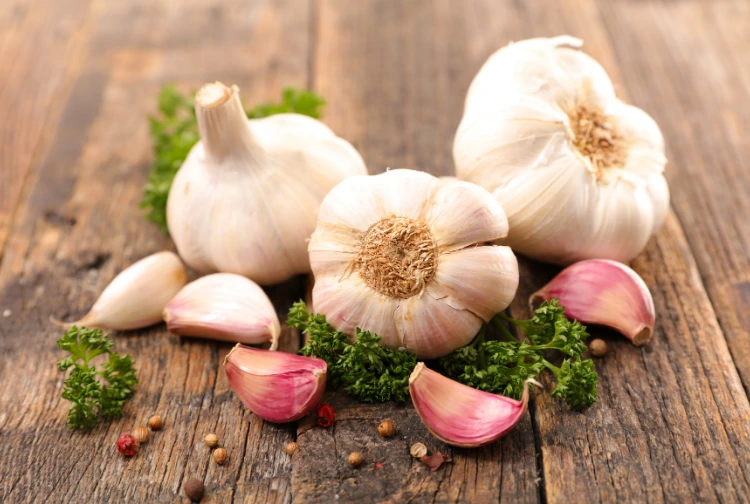

6. Juniper (Juniperus communis)
Properties:
Juniper, scientifically known as Juniperus communis, stands as a guardian herb amidst a collective of protective plants, each contributing unique properties crucial in the realms of protection, purification, and warding off negative influences. Much like its protective herb companions, juniper possesses the following essential qualities:
- Warding Off Evil Spirits and Negative Energies: Juniper, akin to sage, garlic, and black salt, is renowned for its ability to ward off evil spirits and banish negative energies. Its aromatic smoke creates a potent protective shield, making it a cornerstone in purification and protective rituals across cultures. When combined with other protective herbs like rosemary and thyme, its energy forms an impenetrable barrier against malevolent forces.
- Protection Against Malevolent Forces: Juniper, like basil and rue, is believed to protect against malevolent forces, psychic attacks, and unwanted influences. Its presence, alongside protective herbs such as lavender and mugwort, acts as a deterrent, creating a powerful shield against negative entities and energies. Combining the energies of these protective herbs fortifies the defense against psychic intrusions.
- Purification and Cleansing: Similar to cedar and sage, juniper is used for purification and cleansing rituals. Its purifying properties clear spaces, dispelling negativity and creating a harmonious environment. When combined with other protective herbs like frankincense and myrrh, its cleansing powers intensify, ensuring thorough purification and protection.
- Healing and Restoration: Juniper is not only a protective herb but also renowned for its healing properties. Its energy promotes physical and spiritual well-being. When combined with healing herbs like chamomile and echinacea, it becomes a potent remedy for restoring balance, ensuring both protection and rejuvenation.
Cultural Significance:
1. Ancient Folklore and Superstitions:
- In ancient folklore, juniper was used alongside herbs like sage and rosemary to purify spaces and ward off evil spirits. These protective herbs were believed to have the power to repel negative energies, ensuring the safety and sanctity of the environment.
2. European Witchcraft and Folk Magic:
- Juniper, like vervain and mugwort, found its place in European witchcraft and folk magic. green Witches used juniper branches alongside herbs like thyme and basil for protection, crafting powerful charms and sachets to guard against hexes and curses. The combined energy of these protective herbs amplified their potency, creating a formidable defense.
3. Native American Traditions:
- In Native American traditions, juniper was burned as part of protective rituals. Its smoke, combined with the energy of other protective herbs like cedar and sweetgrass, was believed to purify spaces and protect against negative influences, reflecting the interconnected power of these protective plants.
4. Modern Magical Practices:
- In contemporary magical practices, juniper is integrated into protective sachets, charms, and spells alongside herbs like sage and cedar. The synergy of these protective herbs forms a shield that not only guards against negativity and malevolent forces but also promotes overall well-being and spiritual harmony.
Juniper, entwined with the energies of its protective herb allies, continues to be a revered plant in diverse spiritual practices, herbal remedies, and protective rituals. Its enduring cultural significance and potent properties, when combined with other protective herbs, create a harmonious and potent defense against negative influences across various traditions.
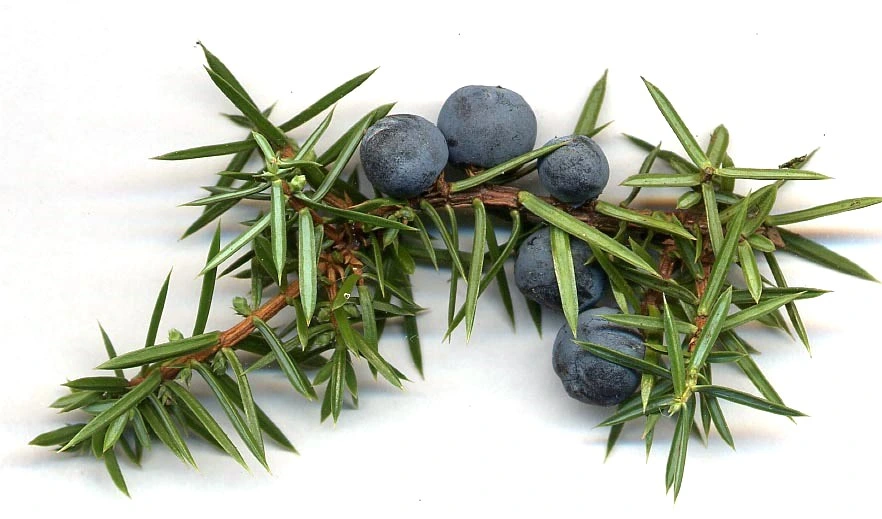

7. Angelica Root (Angelica archangelica)
Angelica Root (Angelica archangelica) and Its Potent Protective Herb Alliances: Properties and Cultural Reverence
Properties:
Angelica Root, scientifically recognized as Angelica archangelica, stands as a revered guardian herb amidst a coalition of protective plants, each contributing vital properties essential in the realms of protection, purification, and warding off negative influences. Alongside its protective herb companions, Angelica Root showcases the following essential qualities:
- Warding Off Evil Spirits and Negative Energies: Angelica Root, akin to sage, garlic, and black salt, possesses the power to ward off evil spirits and banish negative energies. Its aromatic essence creates a potent protective shield, becoming a fundamental element in purification and protective rituals across cultures. When intertwined with other protective herbs like juniper and mugwort, it forms an impenetrable barrier against malevolent forces.
- Protection Against Malevolent Forces: Angelica Root, like basil and rue, acts as a guardian against malevolent forces, psychic attacks, and unwanted influences. Its presence, alongside protective herbs such as rosemary and thyme, serves as a deterrent, creating a robust shield against negative entities and energies. The collective energy of these protective herbs fortifies the defense against psychic intrusions.
- Purification and Cleansing: Similar to cedar and sage, Angelica Root is utilized for purification and cleansing rituals. Its purifying properties clear spaces, dispelling negativity and establishing a harmonious environment. When coupled with other protective herbs like frankincense and myrrh, its cleansing powers intensify, ensuring thorough purification and protection.
- Healing and Restoration: Angelica Root not only protects but also heals. Its energy promotes physical and spiritual well-being. When combined with healing herbs like chamomile and lavender, it transforms into a potent remedy for restoring balance, ensuring both protection and rejuvenation.
Cultural Significance:
1. Ancient Folklore and Superstitions:
- In ancient folklore, Angelica Root was utilized alongside herbs like sage and rosemary to purify spaces and ward off evil spirits. These protective herbs were believed to repel negative energies, ensuring the safety and sanctity of the environment.
2. European Witchcraft and Folk Magic:
- Angelica Root, like vervain and mugwort, found its place in European witchcraft and folk magic. Witches crafted powerful charms and sachets using Angelica Root alongside herbs like thyme and basil for protection. The collective energy of these protective herbs amplified their potency, forming a formidable defense.
3. Native American Traditions:
- In Native American traditions, Angelica Root was incorporated into protective rituals alongside herbs like cedar and sweetgrass. Its energy, blended with other protective herbs, purified spaces and protected against negative influences, showcasing the interlinked power of these protective plants.
4. Modern Magical Practices:
- In contemporary magical practices, Angelica Root is integrated into protective sachets, charms, and spells alongside herbs like sage and juniper. The harmonious synergy of these protective herbs creates a shield that guards against negativity and malevolent forces, promoting overall well-being and spiritual harmony.
Angelica Root, interwoven with the energies of its protective herb allies, remains a revered herb in diverse spiritual practices, herbal remedies, and protective rituals. Its enduring cultural significance and potent properties, when blended with other protective herbs, create a harmonious and robust defense against negative influences across various traditions.
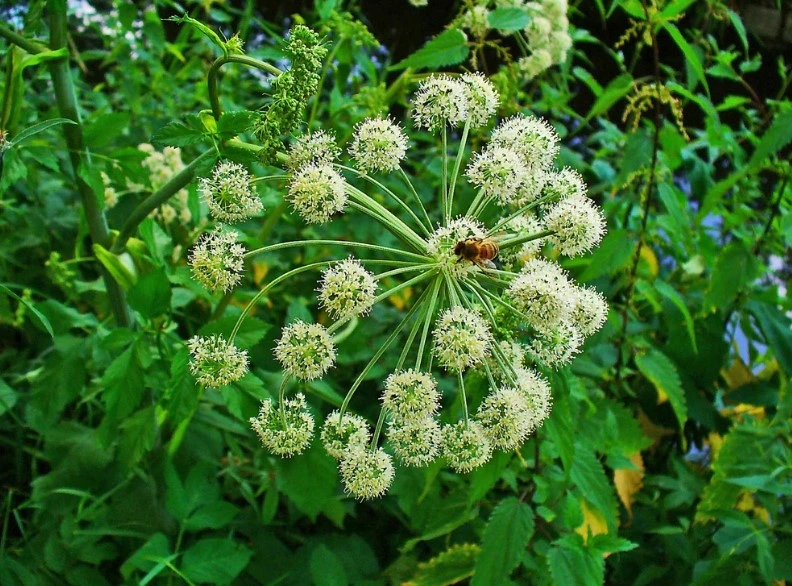

8. Salt (Sodium chloride)
Properties:
Salt, scientifically termed Sodium chloride, stands as a universal protector, blending its essence with a tapestry of protective herbs. This alliance brings forth essential properties crucial in the realms of protection, purification, and warding off negative influences. Paired with its protective herb companions, salt showcases the following vital qualities:
- Warding Off Evil Spirits and Negative Energies: Salt, akin to sage, garlic, and juniper, possesses the power to ward off evil spirits and banish negative energies. Its crystalline structure symbolizes purity and protection, making it fundamental in various purification and protective rituals across cultures. Combined with protective herbs like rosemary and thyme, it forms an unyielding barrier against malevolent forces.
- Protection Against Malevolent Forces: Salt, like basil and rue, acts as a guardian against malevolent forces, psychic attacks, and unwanted influences. Its presence, alongside protective herbs such as lavender and mugwort, acts as a potent deterrent, creating a robust shield against negative entities and energies. The collective energy of these protective herbs fortifies the defense against psychic intrusions.
- Purification and Cleansing: Similar to cedar and sage, salt is a cornerstone in purification and cleansing rituals. Its purifying properties clear spaces, dispelling negativity and establishing a harmonious environment. Paired with protective herbs like frankincense and myrrh, its cleansing powers intensify, ensuring thorough purification and protection.
- Healing and Restoration: Salt, beyond its protective role, holds healing energies. When combined with healing herbs like chamomile and lavender, it transforms into a potent remedy, restoring balance and ensuring both protection and rejuvenation.
Cultural Significance:
1. Ancient Folklore and Superstitions:
- In ancient folklore, salt was sprinkled across thresholds and windowsills alongside herbs like sage and rosemary, purifying homes and warding off evil spirits. This practice created a protective barrier, ensuring the safety and sanctity of the household.
2. European Witchcraft and Folk Magic:
- Salt, like vervain and mugwort, found its place in European witchcraft and folk magic. Witches incorporated salt into protective circles alongside herbs like thyme and basil, crafting powerful charms and sachets for enhanced protection. The fusion of these protective herbs intensified their potency, forming a formidable defense.
3. Cultural and Religious Symbolism:
- Salt bears immense cultural and religious significance globally, symbolizing purity, protection, and sanctity. Its use in rituals alongside herbs like juniper and frankincense emphasizes its universal protective properties, bridging cultures under the banner of spiritual defense.
4. Modern Spiritual Practices:
- In contemporary spiritual practices, salt harmoniously combines with protective herbs like sage and juniper in sachets, charms, and spells. This synergy creates a shield guarding against negativity and malevolent forces, fostering overall well-being and spiritual harmony.
Salt, entwined with the energies of its protective herb allies, remains a revered element in diverse spiritual practices, herbal remedies, and protective rituals. This enduring alliance, blending cultural reverence with potent properties, creates a universal and robust defense against negative influences across various traditions.


Final Thoughts
In the intricate world of spiritual practices, protective herbs stand as steadfast sentinels, shielding against negativity and illuminating paths of positive energy. Across cultures and centuries, these herbs have woven a universal thread of safeguarding rituals, embracing both tradition and modernity. In their aromatic presence, we discover not just botanical wonders but enduring symbols of resilience and spiritual fortitude. As we continue to incorporate these protective herbs into our lives, we tap into an ancient wisdom that transcends time, finding solace and strength in their timeless essence.

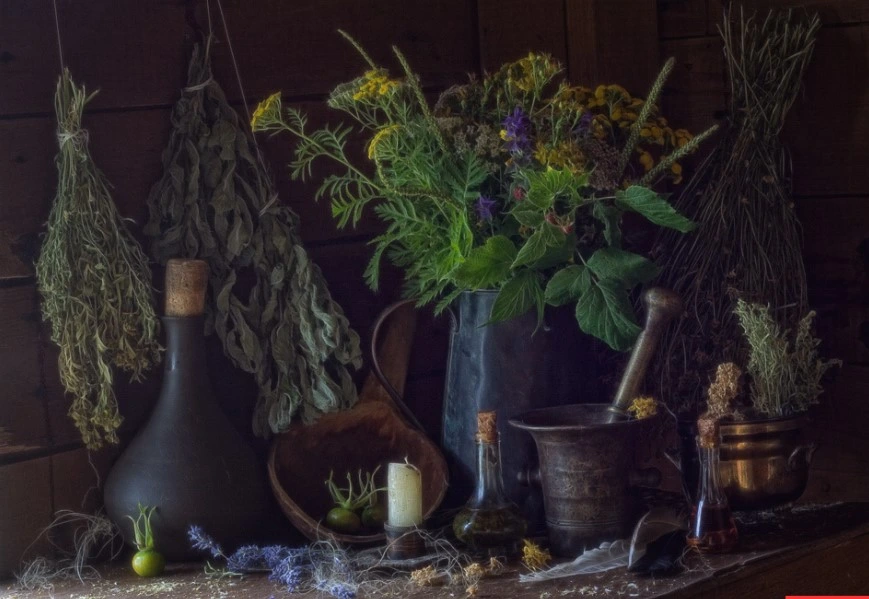
Pingback: The Power of Protective Herbs: Top 7 Strong Her...